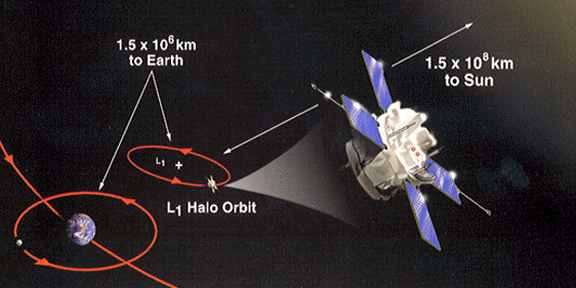
|
SPACECRAFT OBSERVATIONS
To help
forecast auroral conditions, scientists use a combination of both space
and ground-based data. There are several spacecraft in orbit around the
Earth that provide real-time observations of the sun, the solar wind, and
the aurora. |
| |
| POLAR The Polar Spacecraft was launched February 24th, 1996 to study the
aurora, the radiation belt, and magnetic & electric fields in space.
It carries two specially developed cameras, the VIS
and the UVI, which image the entire
auroral oval in the Ultra-Violet wavelengths. Examination of this data
help scientists match particle measurements mad in space with visual
features of the auroral oval. |
 |
| |
 |
ACE
Advanced
Composition Explorer
Launched
on August 25th, 1997 to study energetic particles from both the Sun and
outside our solar system. Among other measurements, this spacecraft
determines the speed
of the solar wind
and also measures the strength and direction
of the magnetic field in the solar wind. When the direction of the
magnetic field measured by ACE is "negative," i.e.,
pointing down relative to the Earth's North pole, increasing amounts of
solar wind energy are transferred into the Earth's magnetosphere, the
immediate space around the Earth protected by the geomagnetic field. |
| |
|
SOHO
Solar
and Heliospheric Observatory
Launched
on December 2, 1995, SOHO
was designed to study the internal structure of the sun, its outer
atmosphere, and how the solar wind is generated. Solar flares, Coronal
Mass Ejections (CMEs), and other violent events on the surface can be
measured by SOHO and serve as a warning that disturbances in the solar
wind may reach the Earth within a matter of days. |
 |
|
|
|






